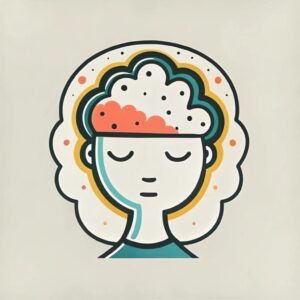
Question More, Action Knowledge.
Remember, at QMAK, we don’t just teach; we empower. We don’t just inform; we inspire. We don’t just question; we act. Become a Gold Member, and let’s unlock your child’s full potential, one question at a time.
As homeschooling parents, we’re not just teachers—we’re brain cultivators.
Understanding how our children’s brains process and integrate information can transform our teaching approach and help us create more effective learning environments.
The interactive brain dynamics chart accompanying this article offers a visual exploration of how the brain operates across different dimensions of space, time, and connectivity.

Our brain doesn’t process information in a single, uniform way. Instead, it operates across multiple dimensions simultaneously:
The left side of our chart (Space) represents how information spreads physically through the brain, while the right side (Time) shows how processing unfolds over different durations. Understanding this helps us recognize that learning involves both immediate reactions and gradual integration of knowledge.
The top half (Extrinsic) relates to how the brain processes external stimuli—like reading a book or listening to a lecture. The bottom half (Intrinsic) represents internal processing—how information gets integrated into existing knowledge networks and becomes part of long-term understanding.
This quadrant shows how incoming information spreads through the brain:
This quadrant shows how learning unfolds over time:
This quadrant reveals how the brain organizes its internal networks:
This quadrant shows the brain’s rhythmic activities that organize internal processing:
Understanding these brain dynamics allows us to create a more natural learning cycle:
The brain dynamics chart also helps explain why children learn differently:
By understanding how the brain processes, integrates, and consolidates information across these different dimensions, we can create learning environments that work with—rather than against—our children’s natural brain development.
The interactive brain dynamics chart serves as a reminder that learning isn’t linear but multi-dimensional. As homeschooling parents, we have the unique opportunity to adapt our teaching to support these natural brain processes, creating learning experiences that are not just academically effective but neurologically optimized.
Remember that the brain is incredibly adaptable, especially during childhood. By intentionally engaging these various dimensions of brain function, we’re not just teaching content—we’re helping build stronger, more integrated brains that are prepared for lifelong learning.
Synapses firing, connections growing
Learning’s not linear, it’s always flowing
Verse 1
Four dimensions working inside my mind
Processing the world one thought at a time
Space and time, internal and out
That’s what this learning journey’s about
Catching new concepts when they first arrive
Watch how they spread, see connections thrive
From a single point to a network wide
Building my knowledge with every stride
Pre-Chorus
More than memorizing what I’m told
It’s how my brain takes hold
Of information, makes it mine
Creating patterns, taking time
Chorus
Brain waves moving through every stage
Turning each lesson to another page
From first impressions to deeper thought
This is how understanding’s caught
Taking in the world through different views
Connecting old knowledge with something new
Brain waves flowing, growing strong
This is where my thoughts belong
Verse 2
Left side spatial, how knowledge spreads
Right side temporal, time threads
Top half external, what comes in fresh
Bottom half internal, how it all connects
Some days I’m quick with the facts and math
Other times I need the creative path
Different strengths for different tasks
Working together beneath the mask
My brain’s not just one single way
It shifts and adapts throughout the day
High frequency when I’m locked in tight
Mid frequency when I’m feeling right
Low waves working while I sleep at night
Integrating everything in sight
Bridge
Some kids learn fast, others take their time
Some through reading, some through design
Different pathways, different minds
Each one valid, each one fine
When you understand how my brain works best
You can help me learn without the stress
Finding the method that fits my style
Making the journey feel worthwhile
Chorus
Brain waves moving through every stage
Turning each lesson to another page
From first impressions to deeper thought
This is how understanding’s caught
Taking in the world through different views
Connecting old knowledge with something new
Brain waves flowing, growing strong
This is where my thoughts belong
Outro
Learning’s not just what you know
It’s how you let your thinking grow
Four dimensions working in time
Building this beautiful mind of mine

Remember, at QMAK, we don’t just teach; we empower. We don’t just inform; we inspire. We don’t just question; we act. Become a Gold Member, and let’s unlock your child’s full potential, one question at a time.